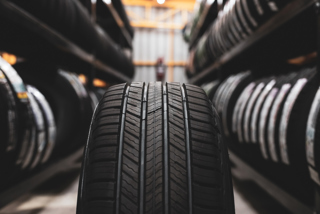The Licence Bureau is warning fleet operators and drivers to ensure they understand the law relating to towing loads.
The licence-checking company says that, with around 4,000 reported incidents a year involving all forms of trailers, it is crucial operators do not fall foul of the law.
Much of the confusion, says the Licence Bureau, relates to the actual date on which an individual passed their test. If a driver passed their test on or after January 1, 1997, they will have a Category B licence, which means they can drive vehicles up to 3,500kg maximum authorised mass (MAM) with up to eight passenger seats (with a trailer up to 750kg). These drivers can also tow heavier trailers if the total MAM of the vehicle and trailer is not more than 3,500kg.
If a driver has a Category BE licence they can drive a vehicle with a MAM of 3,500kg with a trailer. The size of the trailer depends on the BE ‘valid from’ date shown on the licence. If the date is: before 19 January 2013, they can tow any size trailer; on or after 19 January 2013, they can tow a trailer with a MAM of up to 3,500kg.
Malcolm Maycock, managing director of Licence Bureau, said: “This is a complex area due to the different variations in licences and their respective entitlements. It’s also an area that arguably bypasses many businesses, as well as individuals, due to working age demographics and a legacy understanding.
“However, chances are that this area is at its most prolific right now as the transitional licence demographic takes on driving and towing responsibilities.”
The Licence Bureau warning comes after Fleet News highlighted highlighted how drivers were been stopped for towing without the correct licence.
The licence offence carries a minimum fine of £100 and three penalty points, moreover from a corporate perspective, compliance is compromised and insurance invalidated.
Maycock said: “Ultimately, the responsibility for ensuring any work-related journey meets compliance standards is that of the fleet or human resource manager.
“Quite simply they need to make sure licence checks are carried out correctly, drivers are aware of what they can and cannot drive, and operational procedures are developed to suit.”
Licence Bureau recommends the following:
1. Treat everyone as not entitled to drive until you have confirmed they are.
2. Identify which vehicles are fitted with tow bars - this needs to include company cars where the towing is outside the workplace for pleasure such as caravans and horseboxes. They are still your vehicles.
3. Confirm who will drive as you are possibly allowing non-employees to drive them when not at work.
4. Invest in training. Any driver towing a trailer needs training as this is a tool of work and unless they have passed B+E after 1997 will not have had any.
5. Ensure the driver has current competence in towing.
6. Check if the trailer in question, when being used commercially, has any secure load issues.
7. Risk assess the vehicle. The vehicle manual will specify the maximum trailer weights.
8. Risk assess the trailer and ensure the weight is suitable for the vehicle.
9. Risk assess the drivers against the vehicle/trailer combination.






















Login to comment
Comments
No comments have been made yet.